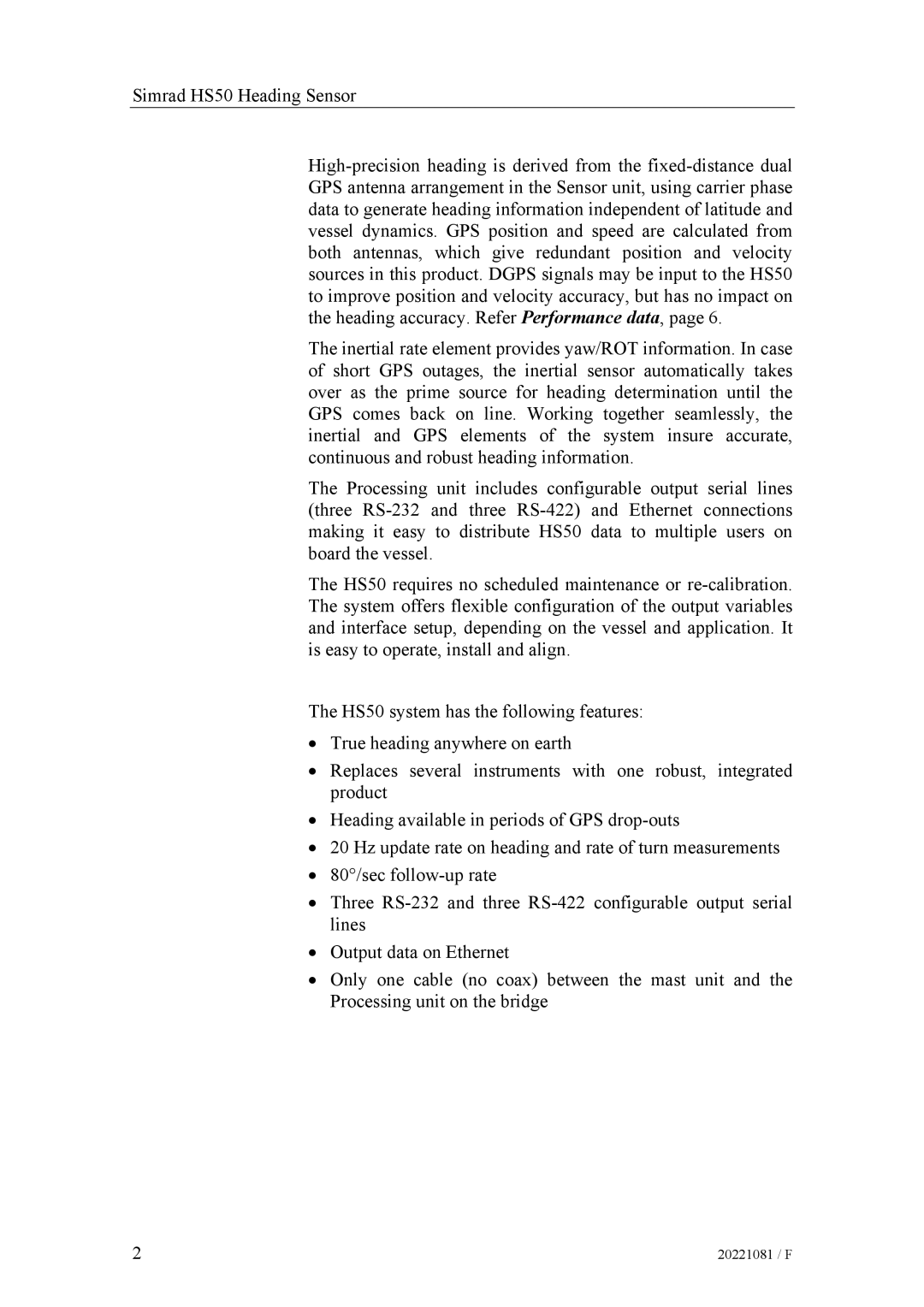Simrad HS50 Heading Sensor
The inertial rate element provides yaw/ROT information. In case of short GPS outages, the inertial sensor automatically takes over as the prime source for heading determination until the GPS comes back on line. Working together seamlessly, the inertial and GPS elements of the system insure accurate, continuous and robust heading information.
The Processing unit includes configurable output serial lines (three
The HS50 requires no scheduled maintenance or
The HS50 system has the following features:
•True heading anywhere on earth
•Replaces several instruments with one robust, integrated product
•Heading available in periods of GPS
•20 Hz update rate on heading and rate of turn measurements
•80°/sec
•Three
•Output data on Ethernet
•Only one cable (no coax) between the mast unit and the Processing unit on the bridge
2 | 20221081 / F |
